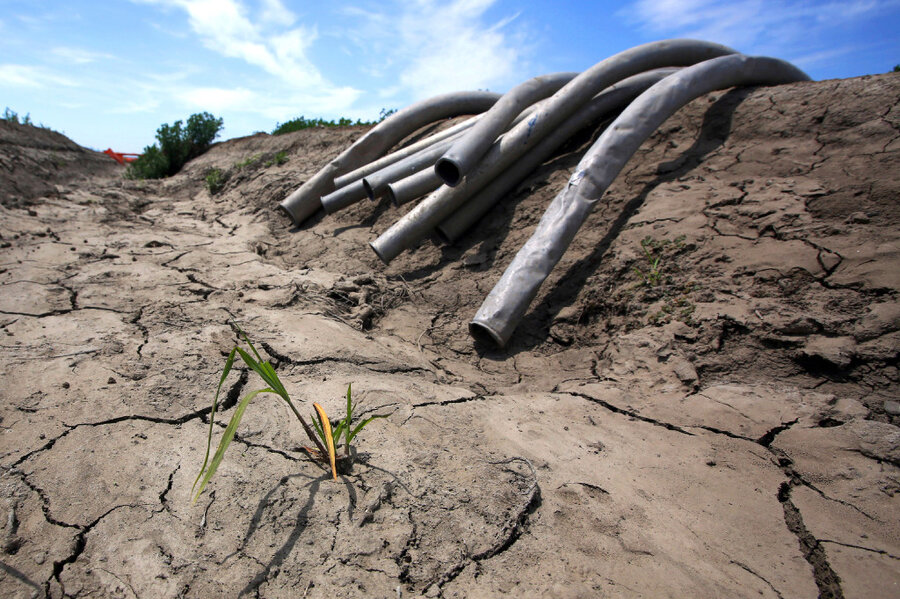What’s the best way to adapt to climate change?
Loading...
Humans can live just about anywhere: frozen tundra, hot deserts, tall mountains, lush rainforests, and somehow, the midwestern United States. Regardless of the climate of a given region however, the one common denominator across all societies is access to fresh water.
When that access is threatened, political, environmental, and social stability is also threatened, says Dave White a professor in Arizona State University’s school of community resources and development, and the director of ASU’s Decision Center for a Desert City (DCDC), a program that is focused on finding solutions to water sustainability, and providing decisionmakers with the right data.
Nothing threatens access to fresh water more than climate change. Adapting to the changes will require the kind of research being conducted at ASU, including the systems thinking and data collection needed to enable decisionmakers to protect resources before a crisis occurs.
Climate in the battlefield
As global average temperatures heat up, caused by greenhouse gases pumped into the atmosphere by humans, the environment will become more extreme: storms will get stronger, droughts will become more severe, and sea levels will rise as the polar ice caps melt.
Some of the key decisionmakers who need to be prepared for these changes wear uniforms.
“Defense and security agencies consider climate change to be a threat multiplier,” says Dr. White, meaning it makes the threats that already face our society worse.
Threats we face at home, like natural disasters, will get worse; threats to our military abroad, like unstable supply lines, will get worse; and threats in areas of strategic interest to the US, like the Middle East, will get worse.
To call the problem a complex one would almost be an understatement. “The scale of the challenge is significant,” says White. “Climate change affects everything.”
The recent acknowledgement of climate change’s effects on national security by Defense Secretary Jim Mattis has jump-started a number of conversations between academia and the military about how to counter the predicted effects of climate change on water security.
The ultimate solution won’t come from incremental efforts at conservation though, says White, but rather from large-scale efforts led by governments working in concert to reduce their contributions to greenhouse gasses.
Individual effort just won’t cut it
The US has an overabundance of natural resources which has led to a cultural attitude that overconsumption and wastefulness is an acceptable personal and industrial practice. As resources become more scarce, wastefulness actually threatens the stability of society, as the distribution of remaining resources begins to skew in favor of those who have the money to pay for it.
For example: conserving water. The United States tends to think of water conservation as an ideal, rather than an attainable reality, says Amber Wutich, a research scientist and associate professor at the school of human evolution and social change at ASU.
Some market analysts have started referring to water as the “new oil,” a phrase which implies both that it is becoming a scarce resource, and that there is a lot of money to be made in buying and selling clean water as a commodity.
“We need systemic change in government and industry and society to really make big gains in water conservation,” Dr. Wutich says.
But there are political barriers to those big gains, often revolving around what kinds of projects get funding.
Money in Western societies often gets spent on engineering-heavy solutions, like reverse osmosis and desalination, that treat the symptoms of a problem and really only serve wealthy populations. “Meanwhile,” says Wutich, “cheaper and simpler water provision solutions, such as low-cost wells and regulatory improvements – which could potentially affect far more people – remain neglected.”
However, without the presence of accurate and compelling data, decisionmakers are hard pressed to make effective decisions.
We need good data
Conserving resources to combat climate change may seem easy enough on the surface (how hard can it be to stop using so much water?) but efficient allocation of resources requires accurate data and a better understanding of how complex systems interact with each other, says Giuseppe Mascaro, an assistant professor at the school of sustainable engineering at ASU.
As the global climate changes, managing scarcer and scarcer resources is becoming an international priority.
Dr. Mascaro and his team at ASU were recently awarded a grant from the National Science Foundation to gather fundamental data about the nexus between food, water, and energy systems so that the relationships between them can be visualized.
Their research will help determine data points like exactly how much water different crops need, so that decision makers can allocate water more effectively.
Mascaro’s job is not to interpret the data, but to ensure that it’s being collected and displayed accurately so that decisionmakers and analysts have an easier job understanding the scope of the problem in order to shape policy.
In anticipation of its scarcity, some leaders are stepping up to take on the challenge.
Learning lessons from drought
As leaders during times of natural disasters, governors are key players in how best to adapt to a changing climate. Gov. Jerry Brown of California provides a recent example as he guided the state through extreme drought.
Despite lifting some of the restrictions on water usage after the drought ended, Governor Brown has made a number of bans on wasteful usage permanent, including watering lawns after rain and hosing off sidewalks.
Additionally, a number of state agencies have created a framework called “Making Water Conservation a California Way of Life.” The framework will improve the efficiency of urban water use, strengthen California’s resilience to drought, and allow California’s 410 water utilities to have custom water practices based on population and other factors.
The research and analysis that ASU is doing currently will help inform future frameworks like this one, and will give much better data to key decisionmakers as they take on climate change.







